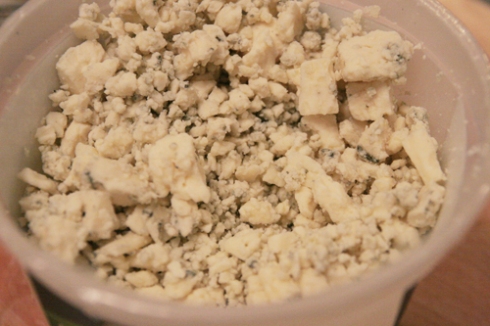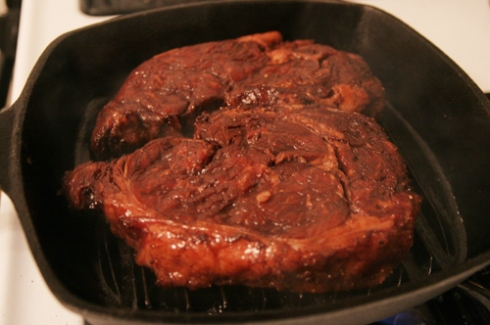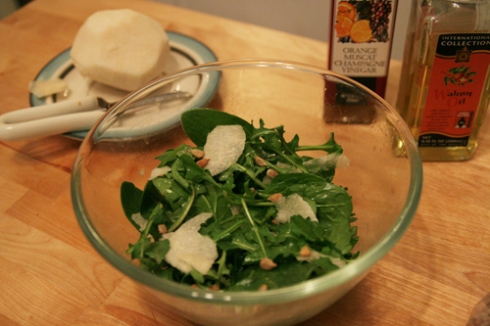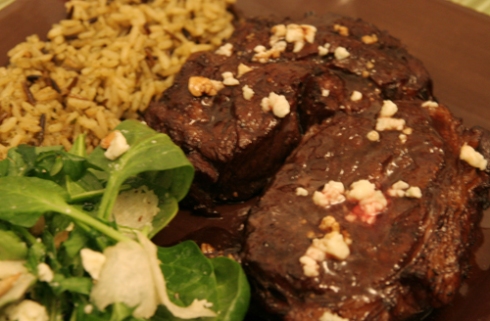 Hola! Today starts out ROYGBIV Week with red, which awesomely, is an easy color to find in the vegetable family. Red foods include strawberries, tomatoes, apples, red peppers, pomegranates, radishes, rhubarbs, cherries and raspberries, to name several.
Hola! Today starts out ROYGBIV Week with red, which awesomely, is an easy color to find in the vegetable family. Red foods include strawberries, tomatoes, apples, red peppers, pomegranates, radishes, rhubarbs, cherries and raspberries, to name several.
 I’m hardly an expert on the chakras, but here’s what I’ve come to understand. The theory comes from Samkhya philosophy, which influenced yoga and tantrism. In it, the human body has several hundred spinning chakras (chakra being the Sanskrit word for “wheel”) positioned throughout. These are part of the ethereal, not physical, body, although they have influence over the physical body. The chakras spin in a circular vortex, absorbing and radiating energy from the surrounding environment. Of the hundreds of chakras, seven have been identified as most important. They are stacked from the base of the spine to the crown of the head, and each is associated with a specific color and sound, as well as physical organs and aspects of the physical, emotional, mental or spiritual life. Chakras have been called lotus flowers, and when a chakra is healthy, the lotus is opened. An imbalance in any area of life can weaken the chakra system. One of the ways to nourish the various chakras is to eat foods associated with their color. A plant’s color is representative of the rays of sun energy that gave it life.
I’m hardly an expert on the chakras, but here’s what I’ve come to understand. The theory comes from Samkhya philosophy, which influenced yoga and tantrism. In it, the human body has several hundred spinning chakras (chakra being the Sanskrit word for “wheel”) positioned throughout. These are part of the ethereal, not physical, body, although they have influence over the physical body. The chakras spin in a circular vortex, absorbing and radiating energy from the surrounding environment. Of the hundreds of chakras, seven have been identified as most important. They are stacked from the base of the spine to the crown of the head, and each is associated with a specific color and sound, as well as physical organs and aspects of the physical, emotional, mental or spiritual life. Chakras have been called lotus flowers, and when a chakra is healthy, the lotus is opened. An imbalance in any area of life can weaken the chakra system. One of the ways to nourish the various chakras is to eat foods associated with their color. A plant’s color is representative of the rays of sun energy that gave it life.
For a deeper explanation and test of your own chakra energy levels, check out ChakraEnergy.com.
Today’s chakra: Muladhara – Root of Tree (Root)
Color: Red: vitality, strength & courage
Location: Base of Spine
Associated body organs: Legs & feet, large intestine, adrenal gland, lymph & blood
Controlled emotions: Physical identity and self-preservation
———————————————————————————
For the first recipe of this week, I decided to go with a classic bolognese sauce. (I don’t think Indians eat beef, but…) I can’t say for sure if I’ve ever actually made one. My end result was a combination of a few different recipes I found online.
My mamma never put red wine in her spaghetti sauce, but when it occurred to me to do it, the choice was a no-brainer.

Two-Buck Chuck!
I also never would have thought to add carrots and celery to this sauce, but since I saw it in a few recipes, I thought what the heck.

Cook the meat and veggies together until the meat is no longer pink. Drain, then add wine, diced tomatoes and tomato paste, herbs and spices, and reduce to desired consistency. Also begin cooking pasta around this step.

Voila!
1 lb lean ground beef
1 cup white onion, diced
1/2 cup celery, diced
1/2 cup carrots, diced
2 cloves garlic, roughly chopped
1 cup dry red wine
1 (28 oz) can diced tomatoes
1 (6 oz) can tomato paste
2 teaspoons dried basil
1 teaspoon dried oregano
1 teaspoon fennel seed
sea salt and black pepper, to taste
grated parmesan to sprinkle on top
For dessert, I decided to make strawberry tarts, because we went to San Diego Desserts recently and got a tart that was to-die-for. What I ended up making was a modification of Ina Garten’s recipe; modification because I didn’t have time to make the tart shells from scratch, don’t own any kind of tart pan even if I’d had the time, and then couldn’t find frozen tart shells at the store. (Good grief, Charlie Brown!) So I bought frozen puff pastry shells instead. Was still delish. I like puff pastry. 🙂
The recipe for the shell is below. But if you decide to use puff pastry shells, preheat the oven to 400 degrees F, then bake them for 20-25 minutes. They will go from looking like this

womp, womp
to this!

Magic!
Scoop out the “tops” out and let them cool.

For the pastry cream, I didn’t have cognac, so I substituted brandy instead. Unfortunately, step-by-step pictures of this process are conspicuously missing from this blog because I was napping while David did this part. But I can tell you that Ina Garten’s instructions are VERY good. Be sure to look at the link for scalded milk too, because we had no idea what that meant.
The pastry cream is a long process, but really does come out exactly like the Contessa says. The pre-whisking “curdling” part happens extremely fast – the cream went from liquid to chunking in “two seconds,” apparently, so just stick patiently with the stirring. Here’s the end result:

Beautimous
Cover the cream with plastic wrap placed directly on the cream and refrigerate until cold. Then scoop into shell and top with strawberries. Final product:

That's MRS. Tart to you!
Tart Shell
1 1/4 cups all-purpose flour
3 tablespoons sugar
1/2 teaspoon kosher salt
6 tablespoons (3/4 stick) cold unsalted butter, diced
2 tablespoons cold shortening (recommended: Crisco)
1/4 cup ice water
2 cups Pastry Cream, recipe follows
2 pints whole strawberries, hulled and halved
1/3 cup apricot jelly
3 tablespoons shelled pistachios, halved, optional
TO MAKE TART SHELLS – Combine the flour, sugar, and salt in a small bowl and place in the freezer for 30 minutes. Put the flour mixture in the bowl of a food processor fitted with a steel blade. Add the butter and shortening and pulse about 10 times, or until the butter is in the size of peas. Add the ice water and process until the dough comes together. Dump on a well-floured board and form into a disk. Wrap in plastic and chill for at least 30 minutes.
Meanwhile, preheat the oven to 375 degrees F.
Roll out the dough and fit into four (4 1/2-inch) tart pans with removable sides, or one 9-inch tart pan. Don’t stretch the dough when placing it in the pans or it will shrink during baking. Cut off the excess by rolling the pin across the top of each pan. Line the tart shells with a piece of buttered aluminum foil, butter side down, and fill them with dried beans or rice. Bake for 10 minutes. Remove the beans and foil, prick the bottom of the shells all over with a fork, and bake for another 15 to 20 minutes until lightly browned. Set aside to cool.
Pastry Cream
5 extra-large egg yolks, room temp.
3/4 cup sugar
3 tablespoons cornstarch
1 1/2 cups scalded milk
1/2 teaspoon pure vanilla extract
1 teaspoon cognac
1 tablespoon unsalted butter
1 tablespoon heavy cream
TO MAKE PASTRY CREAM – In the bowl of an electric mixer fitted with the paddle attachment, beat the egg yolks and sugar on medium-high speed for 4 minutes, or until very thick. Reduce to low speed, and add the cornstarch.
With the mixer still on low, slowly pour the hot milk into the egg mixture. Pour the mixture into a medium saucepan and cook over low heat, stirring constantly with a wooden spoon, until the mixture thickens, 5 to 7 minutes. Don’t be alarmed when the custard comes to a boil and appears to curdle; switch to a whisk and beat vigorously. Cook, whisking constantly, for another 2 minutes; the custard will come together and become very thick, like pudding. Stir in the vanilla, cognac, butter, and heavy cream. Pour the custard through a sieve into a bowl. Place plastic wrap directly on the custard and refrigerate until cold. Yield: 2 cups
ASSEMBLE – Before serving, fill the tart shells with the pastry cream. Arrange the berries decoratively on top of the cream. Melt the apricot jelly with 1 teaspoon of water and brush the top of the tarts. Sprinkle with pistachios, if using, and serve.
Tags: beef, berries, chakras, Italian, pasta, pastry, ROYGBIV, wine
 Bon Appetit! Or as they’d say on an Italian plate, Buon Appetito!
Bon Appetit! Or as they’d say on an Italian plate, Buon Appetito!






















